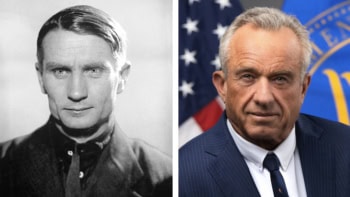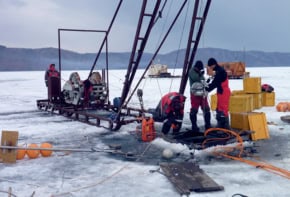
A review by the Nuclear Regulatory Commission (NRC) of the long-term safety of the Yucca Mountain repository for nuclear waste in Nevada has improved the chances that it may go ahead, despite the project being mothballed by the Obama administration back in 2010. The NRC’s “safety evaluation report” concludes that the repository, if built, would “meet the applicable [NRC] performance objectives” for environmental impact once it is permanently closed. However, that report does not actually state whether the NRC should give the green light to the repository being built.
The US Congress originally chose Yucca Mountain as one of five possible central storage sites for nuclear waste in 1986, and designated it as the only choice the following year. By 1997, the Department of Energy (DOE) had tested the site’s suitability for the task by burying metal containers deep underneath the mountain and heating them to simulate the effect of radiation from nuclear waste on the local environment.
Located about 150 km north of Las Vegas, the site was originally intended by the DOE to hold waste safely for 10,000 years after it was sealed. But in 2004 – in response to a case brought by the state of Nevada – a federal-government appeals court ruled that the assurance of safety should last for hundreds of thousands of years, prompting the NRC to begin a review of the site’s safety. However, the election of President Barack Obama in 2008, who had campaigned against the project, seemed to end the matter, and two years later Gregory Jaczko, whom Obama had chosen as chair of the NRC, shut down the review.
Multiple barriers
After a three-year hiatus, the review started up again when another appeals court – responding to a lawsuit bought by states and counties unable to ship their nuclear waste – ordered it to be completed. Released in October, the review approves the repository’s safety standards for individual protection, human intrusion and groundwater protection through the use of multiple barriers to isolate the environment from any radioactivity.
Then five days after the report was published, NRC chair Allison Macfarlane, an opponent of the repository, announced that she will leave the commission at the end of 2014. Macfarlane, who succeeded Jaczko as NRC chair two years ago, was the only geologist on the five-member commission, and frequently appeared in the minority on votes, particularly those involving the safety of nuclear reactors. She will now become director of the Center for International Science and Technology Policy at George Washington University.
Macfarlane’s departure was not the only boost for Yucca Mountain’s proponents. The Republican Party’s capture of the Senate in last month’s US mid-term elections means that Nevada Democrat Harry Reid will lose the leadership of the Senate – a position that had enabled him to block all efforts to advance the repository during the past four years. Republican Cresent Hardy, newly elected to the House of Representatives from the constituency that contains Yucca Mountain, supports the project.
Expensive and time-consuming
Resurrecting Yucca Mountain is, however, likely to be expensive and time-consuming. “To get to the point where we have a licensing decision, we would need to complete a supplement to the environmental-impact statement from the DOE,” NRC spokesperson David McIntyre told Physics World. “We would also have to complete an adjudicatory hearing that would need perhaps two or three years.”
And while the NRC has direct oversight of Yucca Mountain, the DOE – which remains in the hands of Obama-administration appointees – will still decide whether it goes ahead.



